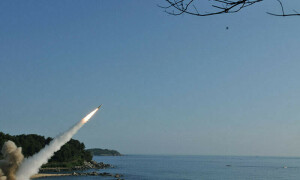CANNES: Revolutionary idol Ernesto “Che” Guevara stormed into Cannes in a marathon epic by Oscar-winning director Steven Soderbergh that dissects the rise and fall of the world’s most celebrated guerrilla leader.
“He had one of the most fascinating lives of the last century,” the US filmmaker said, adding that “I’m compelled by the fact he twice gave up everything to put his life on the line for someone else.” “He even gave up his family,” he told a press conference. “That was fascinating to me.”
“Che” the movie, running exactly four hours and 28 minutes, is a two-part epic about two very distinct chapters in Guevara’s life that Soderbergh would like to see released first together, then separately.
The $60-million film, financed with European cash, was shot in Spanish with a cast comprising some of Latin America’s biggest names.
While one of Cannes’ most hotly-awaited movies this week, the film’s length, language, and documentary-style format has raised questions about whether Soderbergh will find takers at the US box office.
It won applause from weary film critics, who were dished up the entire movie at a late-night screening placated by an intermission brown-paper bag embossed “Che” and containing sandwiches and KitKats.
But they emerged applauding the performance of Oscar-winning Benicio Del Toro, the Puerto Rican-born 41-year-old sometimes known as the “Spanish Brad Pitt”. Del Toro, who as one South American critic put it, “becomes Che” in the movie, was involved from the start in its making a seven-year process that took the team to Cuba, Bolivia, Paris and Miami to research and talk with the few survivors of Guevara’s band of guerrillas.
Like other movies competing for Cannes’ top Palme d’Or prize, the film opts for a documentary style to recreate events that took place 50 years ago.
The first film, “Che Part 1”, sees a thoughtful Guevara sailing off to Cuba in 1956 with Fidel Castro and 80 rebels to overthrow then dictator General Fulgencio Batista.
Only a dozen of the original rebel party were to survive.
Leap-frogging between the ultimately successful guerrilla war in lush tropical Cuba, and a later 1964 visit to New York where Argentinian-born Che addresses the United Nations on Cuba’s new regime, it meticulously chronicles his transformation from doctor to “Commandante” to second-in-command to Fidel.
“I wanted,” said Soderbergh, “to illustrate the process by which a man born with an unshakable will discovers his own ability to inspire and lead others.” The first segment concludes with the breathtaking battle for Santa Clara, where Che’s men against all odds derail a train crammed with Batista troops, and break through homes to get to the church, the town’s highest building, to set up a sniper’s nest.
Part 2 begins in 1966 seven years after the guerrilla victory, when Guevara, darling of the left, throws in his ministerial portfolio to travel to Bolivia undercover and in disguise to export Cuba’s revolution to South America.
While Soderbergh eludes the damning first years of the Castro era, with their executions and clampdowns, the final chapter far from glorifies the leftwing idol.
In the year before his tiny band of Cuban and Bolivian fighters is surrounded and gunned down by US-backed Bolivian special forces, asthma-plagued Guevara fails to rally support either from leftist parties or from desperately-poor locals, only too ready to betray the guerrillas.
His force of a couple of dozen fighters roam high mountains, increasingly sick and hungry, isolated like sore thumbs a descent into hell.
“Che” is likely to be one of the favourites among the 22 contenders for the Palme in a year where politically-minded Sean Penn heads the jury.
—AFP












































Dear visitor, the comments section is undergoing an overhaul and will return soon.